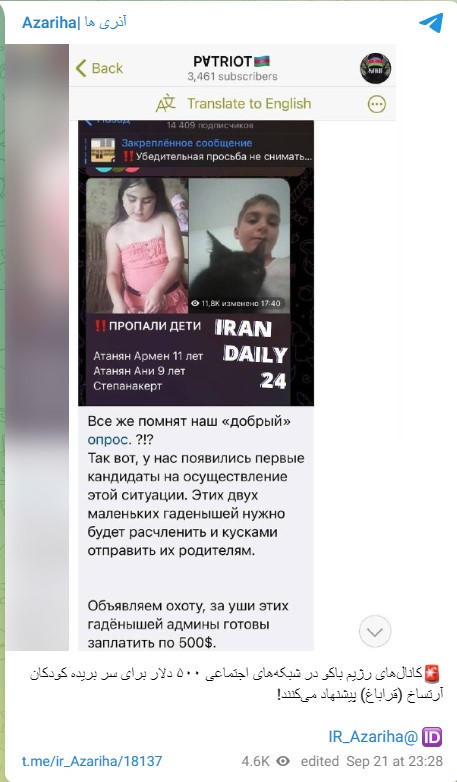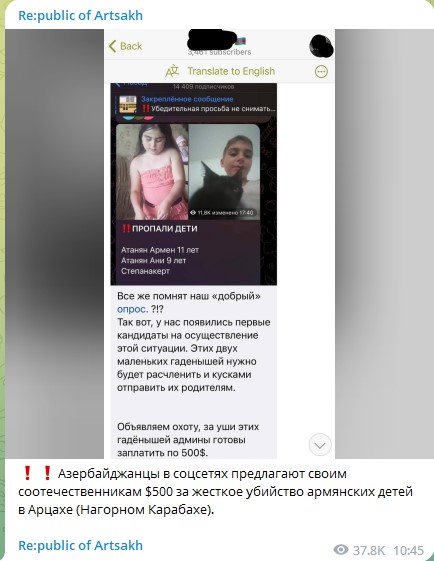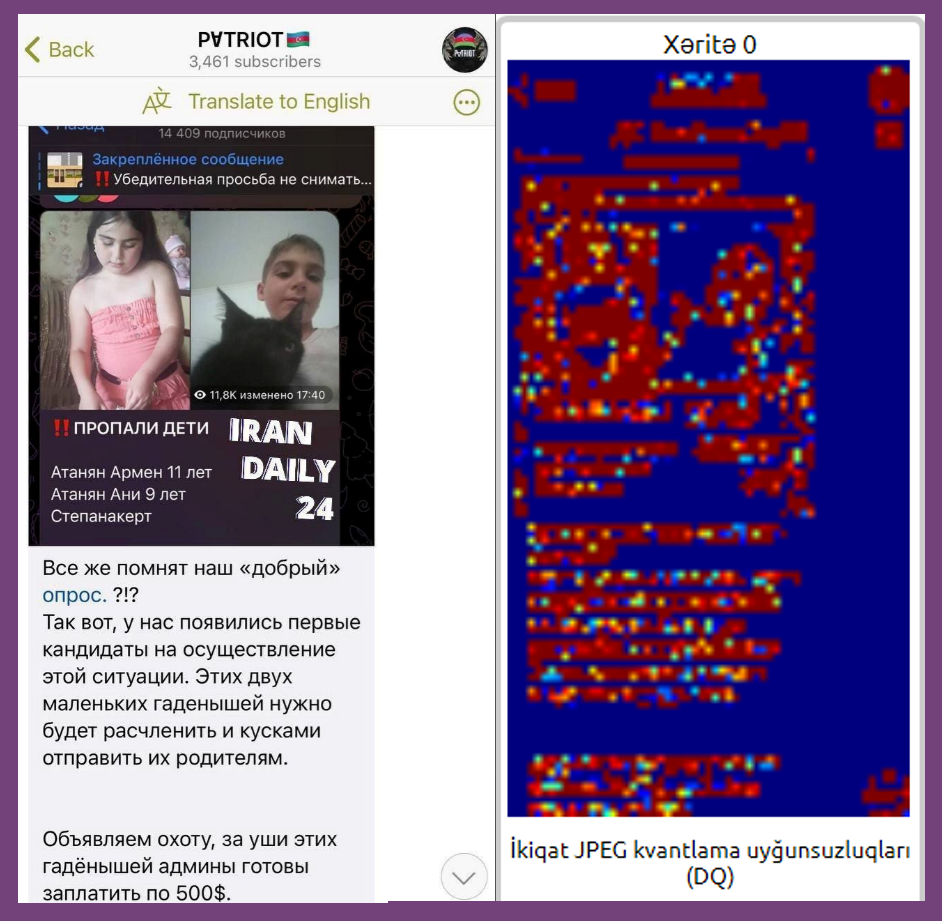
Armenian Telegram channels are spreading news entitled "Azerbaijanis on social networks offer $500 to their compatriots for the merciless murder of Armenian children living in Karabakh."
Faktyoxla Lab. (Factcheking Lab.) has investigated whether this information is true.
Searching the Telegram channels for this news reveals that the information was spread by the @IR_Azariha channel of the Iranian journalist Salar Seyfaddini, a group known for its anti-Azerbaijani views, on September 21 at 11:28 p.m.

Only after that, other Armenian channels spread the information referring to the mentioned channel. "re:public" on September 22, at 10:45 a.m., and "infoteka" on September 22, at 4:57 p.m.


Salar Seyfaddini is the one who interviewed the person they call the "foreign minister" of the so-called organization, spread it in the Iranian media, called the city of Shusha as "shushi", and called the Republic of Azerbaijan "the Republic of Baku" on the Twitter platform.
It appears from the post that they referred to the fake "PⱯTRIOT" Telegram channel, which they presented as an Azerbaijani channel.

Currently, this channel does not exist, instead, the new @patriot_az, which was created on September 22, started to operate. There were enough doubts in the posts of this channel.

Now let's look at the analysis of this screenshot.
When checking the screenshot belonging to "PⱯTRIOT" shared by Iranian and Armenian Telegram channels in the program mever.gr/forensics, the following images are obtained:
Explanation 1. With double quantization analysis, the discrepancy is detected by the algorithm. This is a typical case of fraud detected by the algorithm. That is, it implies that any element is taken from a high-quality image and placed on the image. Localized red areas in the blue image contain inclusions to the photos.

Explanation 2. When any part of a JPEG image is removed and placed into another image of a different quality, the original JPEG leaves compression marks. To detect them, the image is recompressed at all possible quality levels and each result is subtracted from the original. If there is a splice in the image, a "Ghost" (i.e. gap) should appear at the quality level where the splice was originally compressed. This approach is sensitive to changes in image content, as highly localized differences due to edges appear at different quality levels. However, an entire localized region stands out from the rest of the image, which is indicative of forgery.

Explanation 3. Blocking artifact inconsistencies. It shows the traces left when JPEG images are modified by merging, copying or coloring. JPEG compression is based on a non-overlapping grid of contiguous blocks of 8×8 pixels. In case of any forgery, the 8x8 grid of the merged or moved area is misaligned with the rest of the image, leaving a visible trace.

Explanation 4. Error rate analysis. It relies on a very similar technique to JPEG Ghosts, namely extracting a re-compressed JPEG version of the suspect image from the image itself. Unlike JPEG Ghosts, only one version of the image is extracted - in our case, the quality is 75. In addition, the output of JPEG Ghosts is normalized, filtered to enhance local effects, and the ELA output is returned. The hypothesis is that when decompressing a recompressed version of an image, regions that have undergone less (or less disruptive, higher quality) compressions yield higher residuals. That is, this is not an ordinary post or a screenshot from a post, but a fake photo with words edited later.

Thus,
- The post titled "Azerbaijanis on social networks offer 500 dollars to their compatriots for the merciless murder of Armenian children living in Karabakh” spread by Armenian Telegram channels is fake.
- The presented photo is made using various editing and montage programs, it is not original.




















